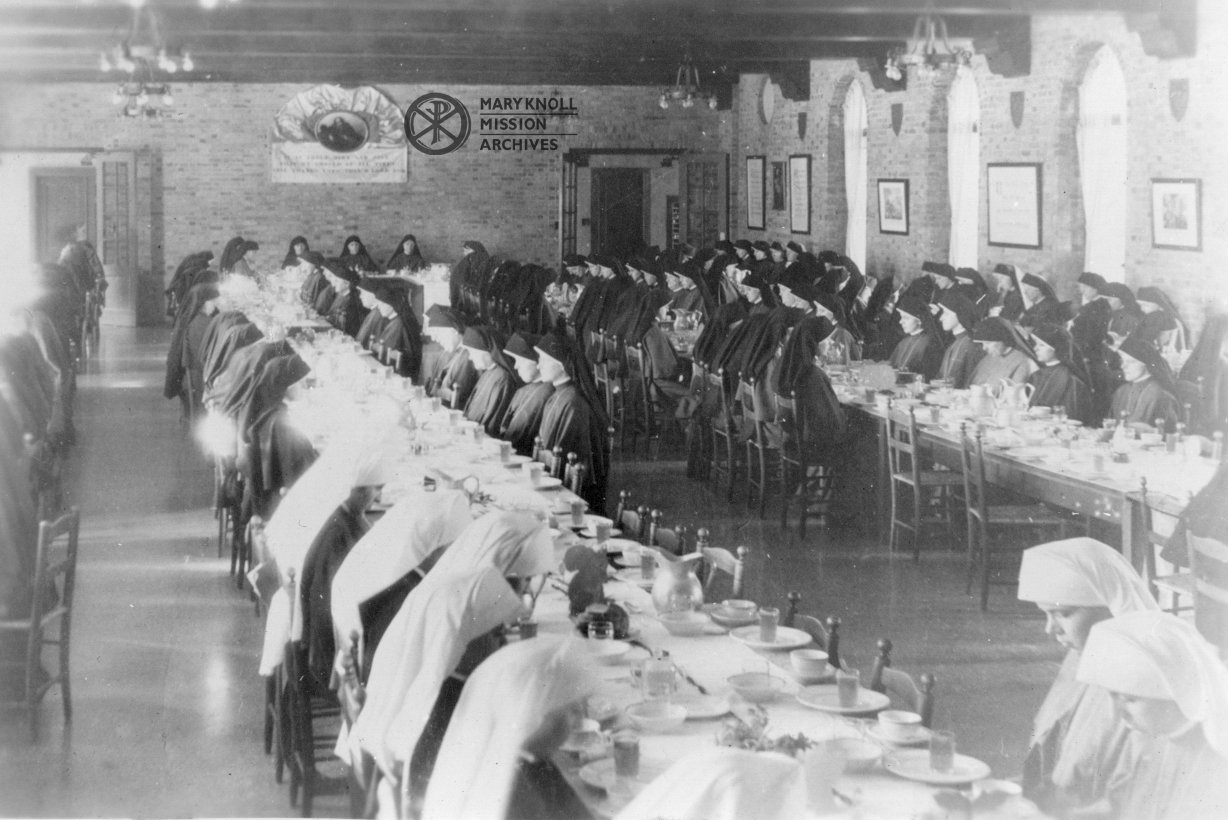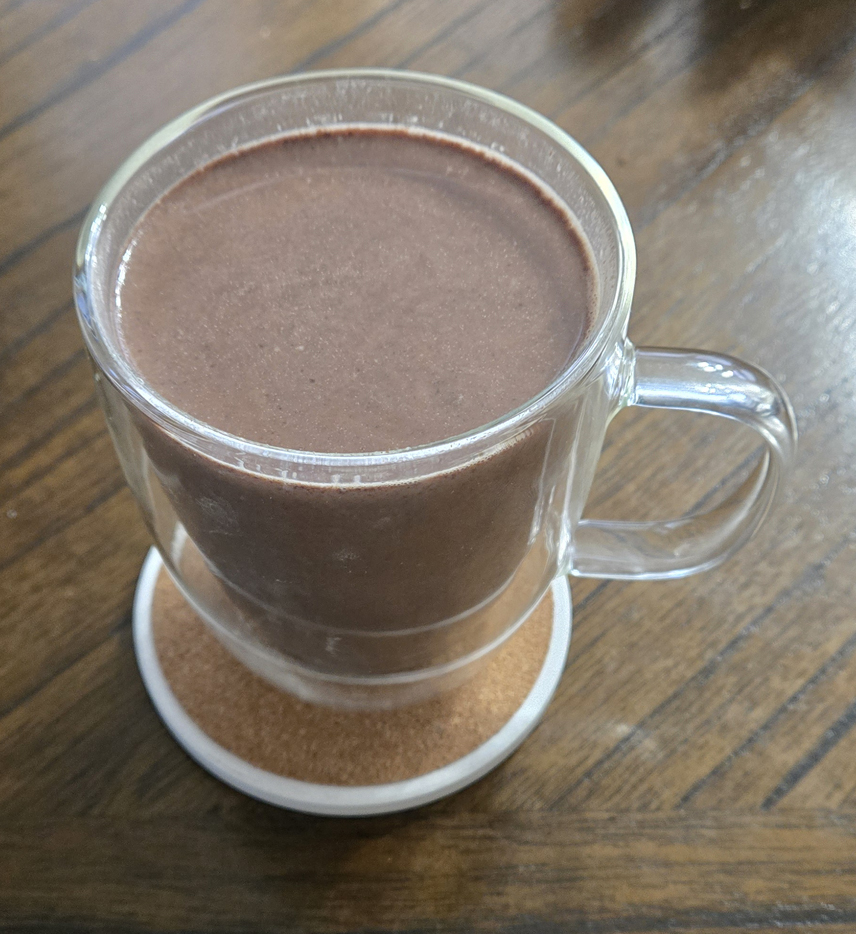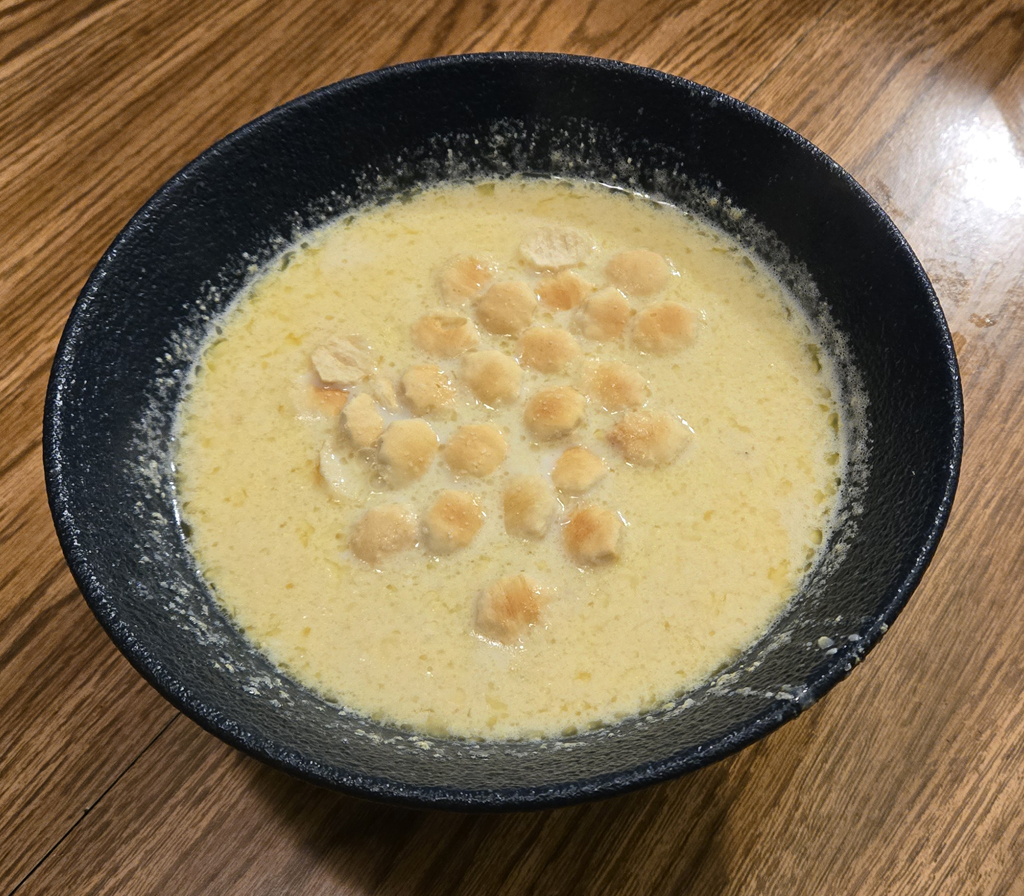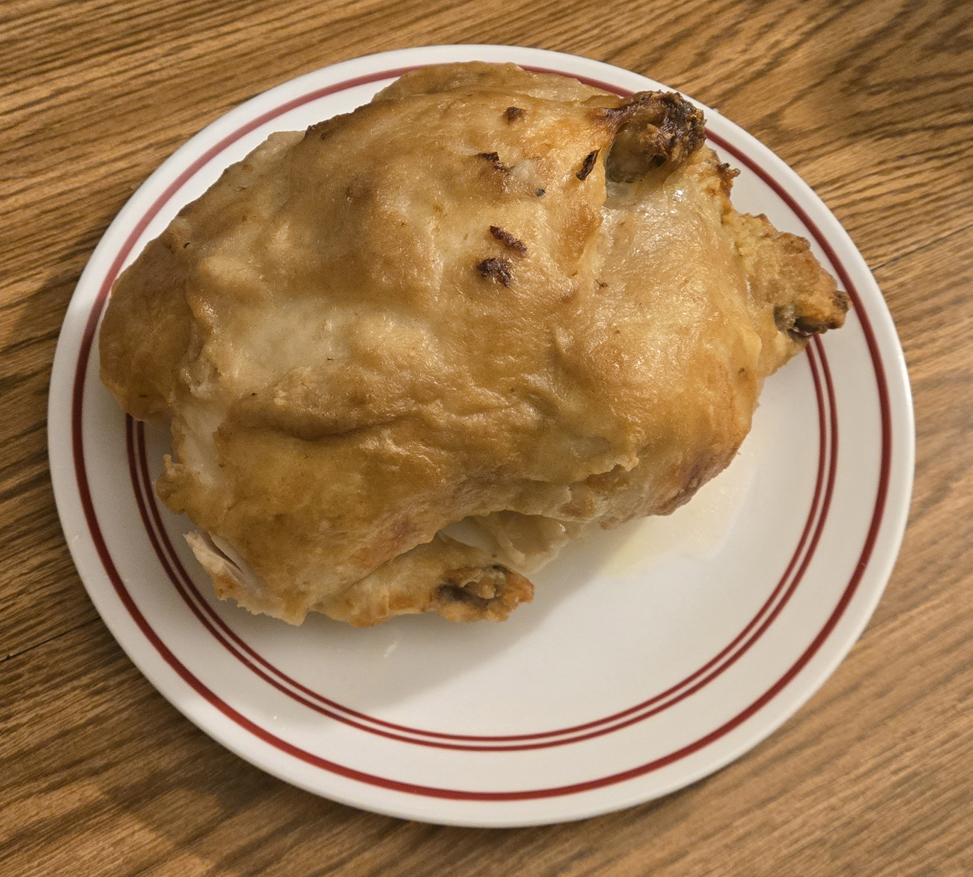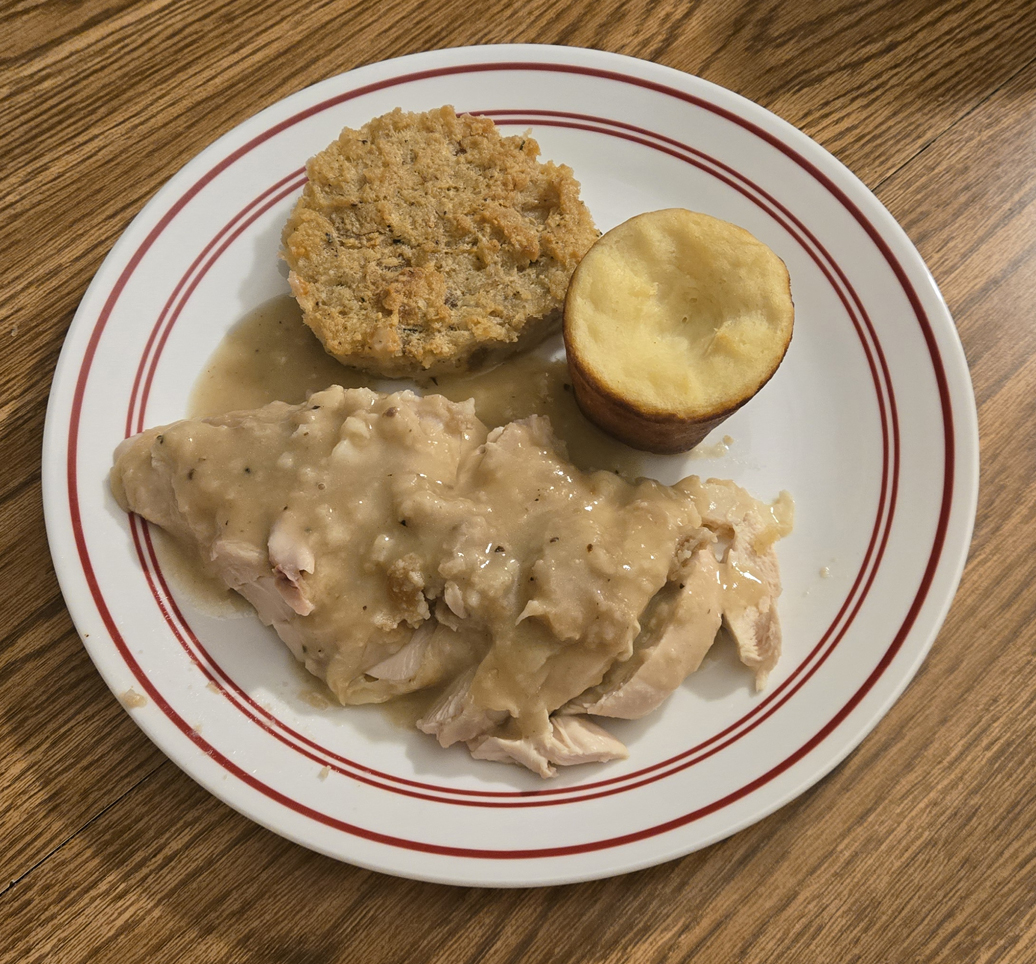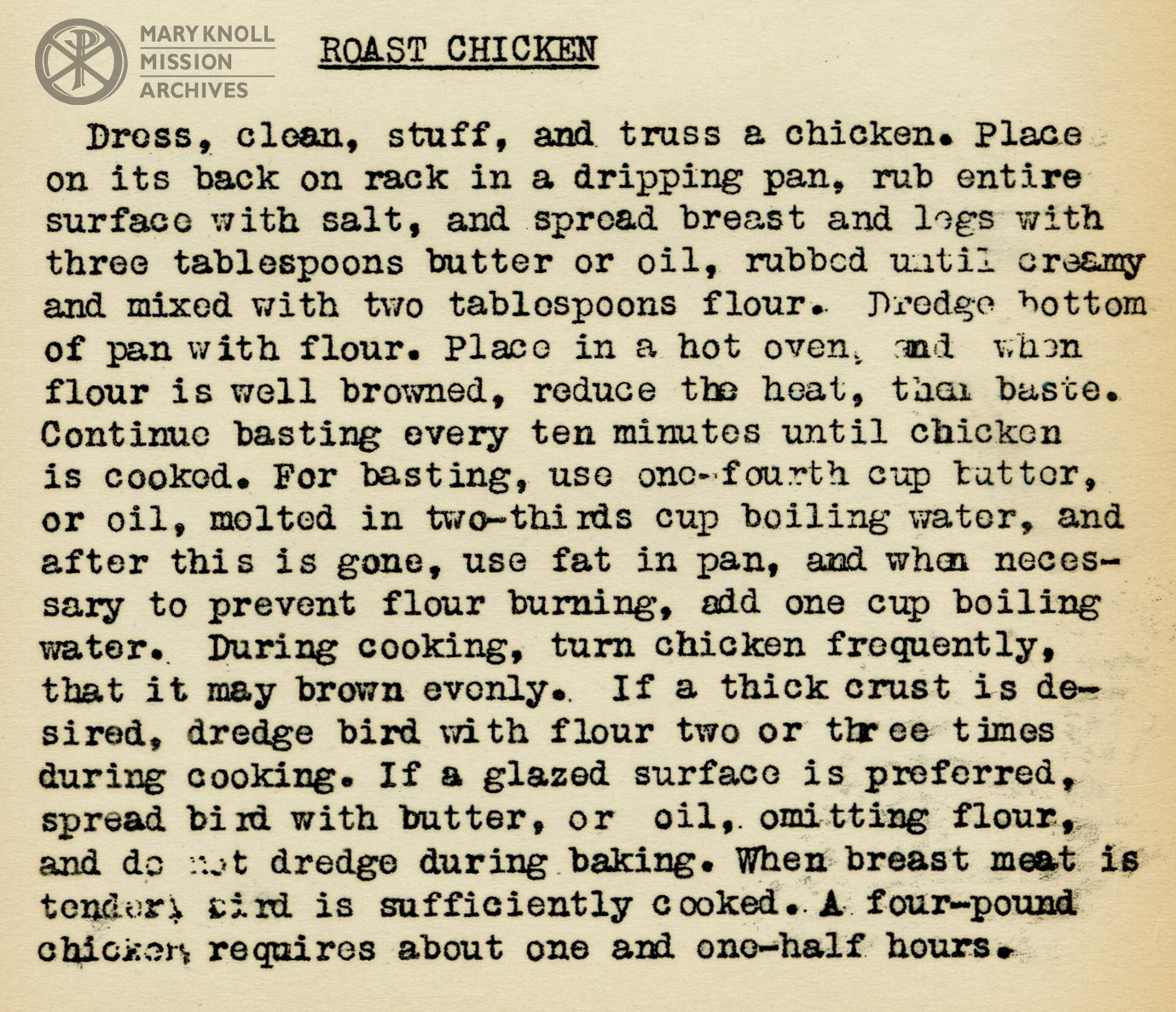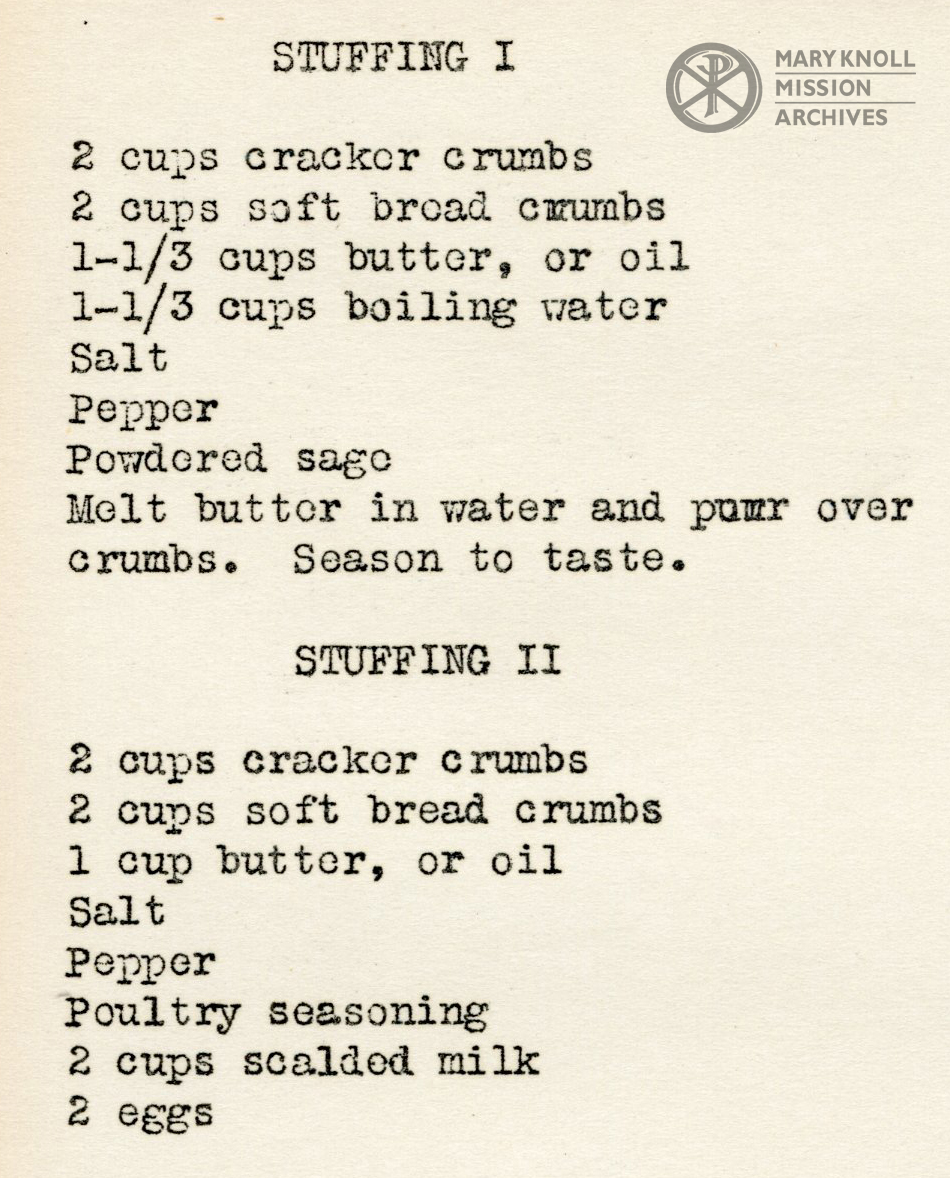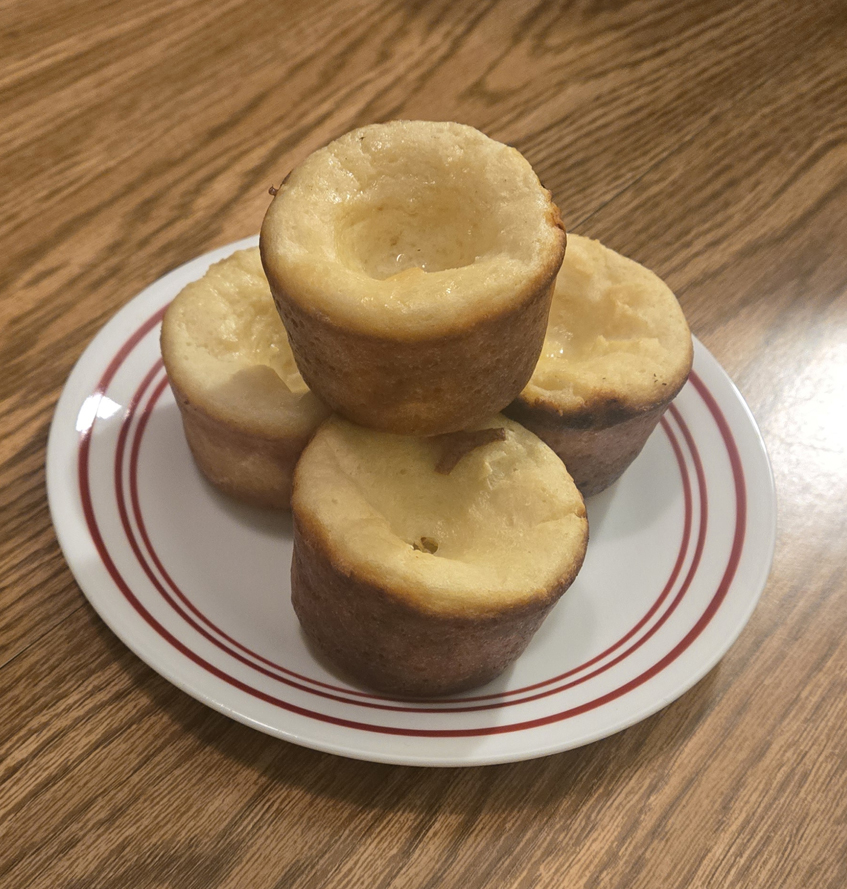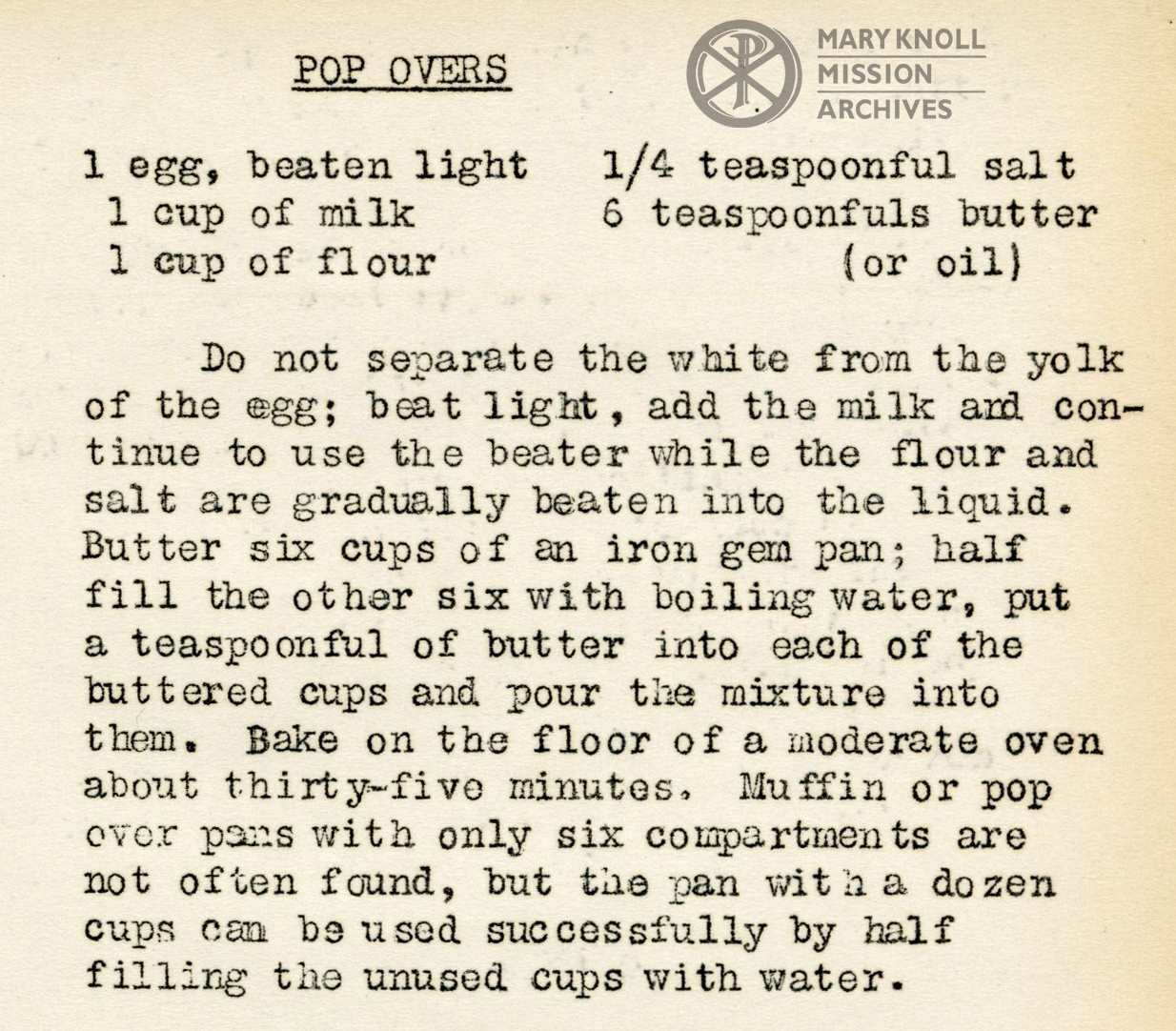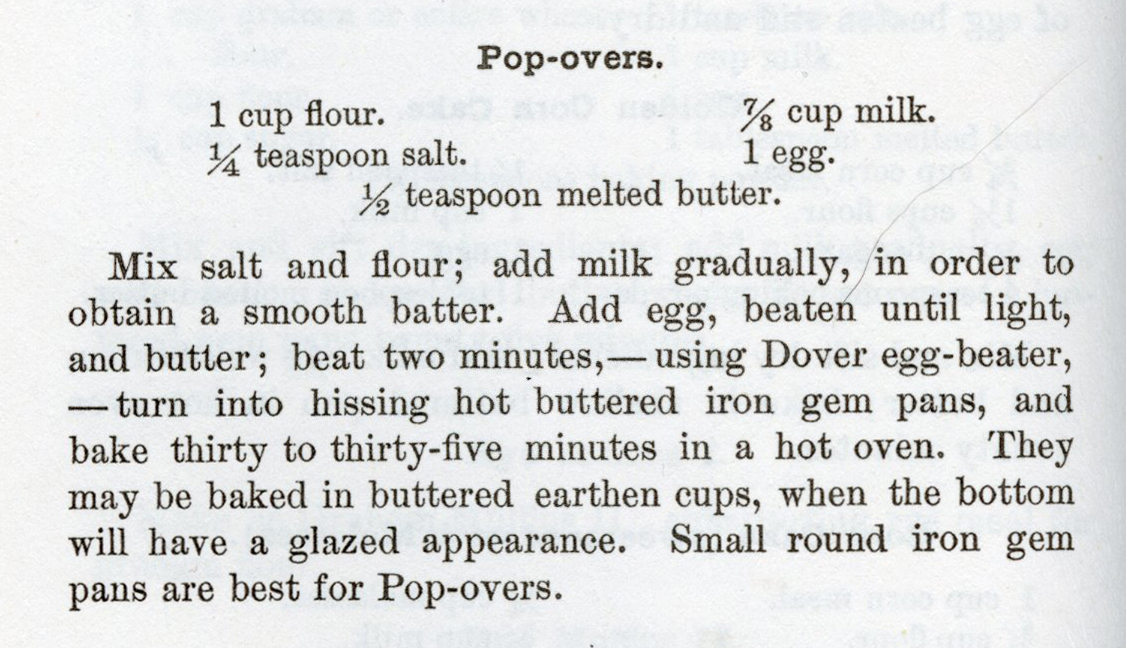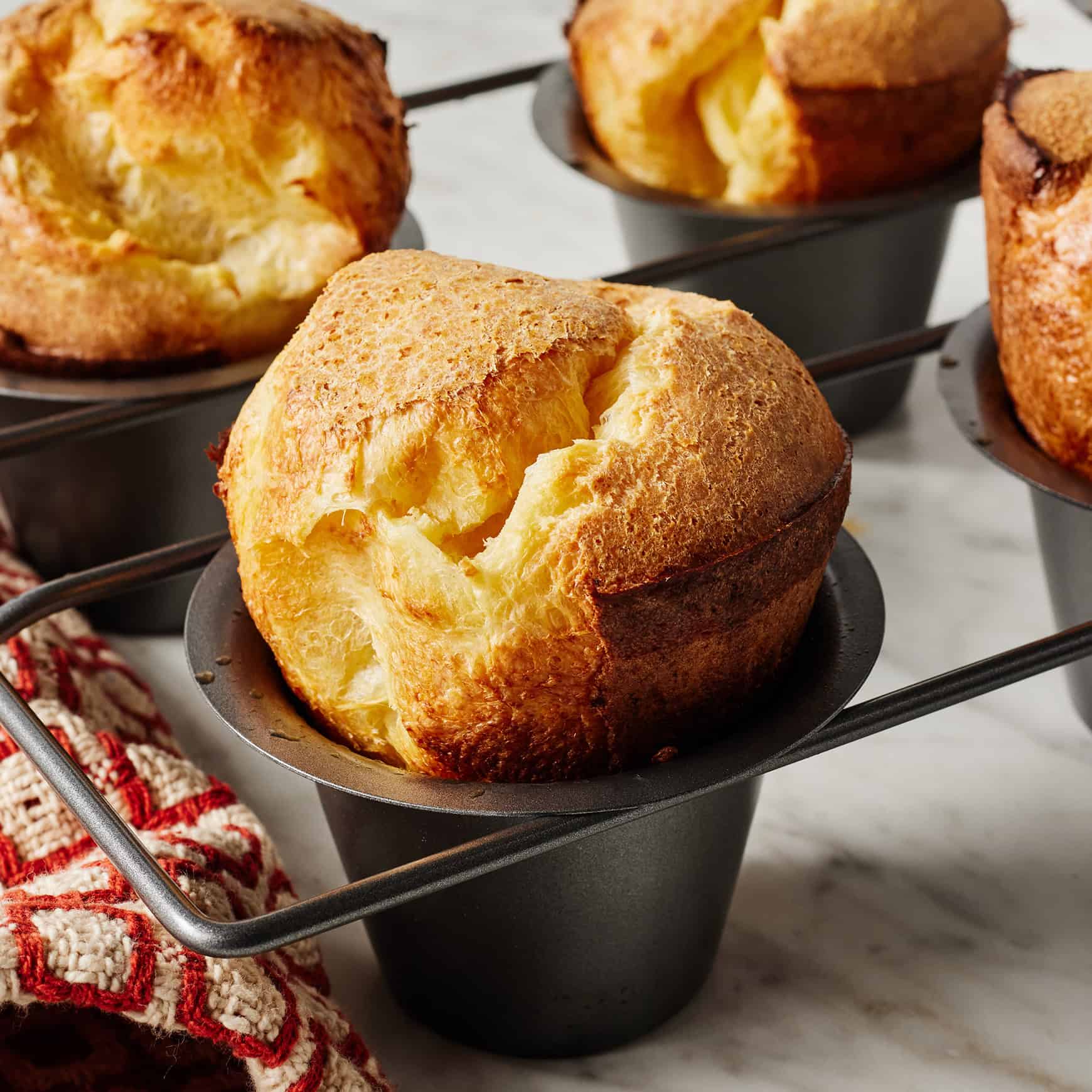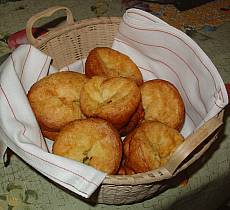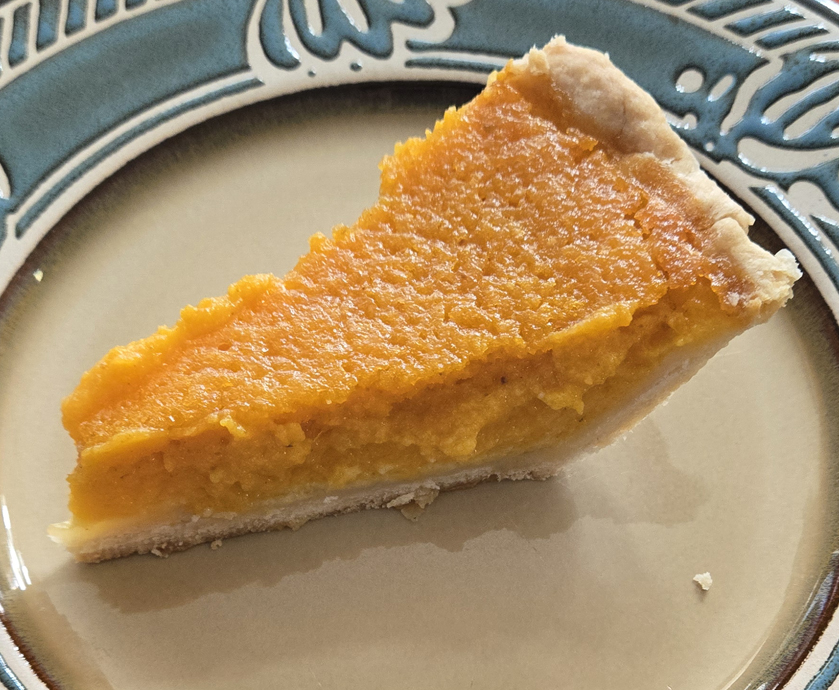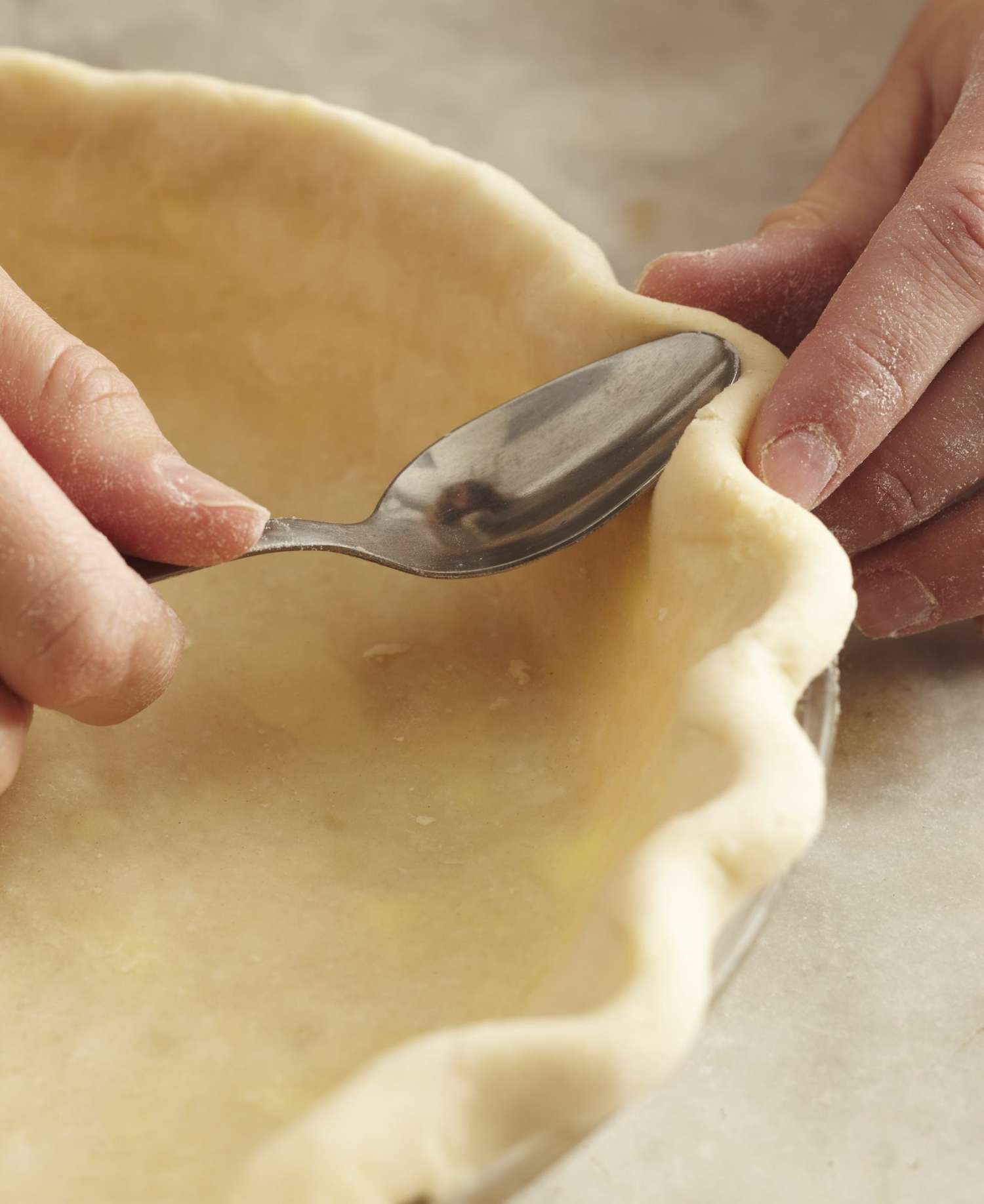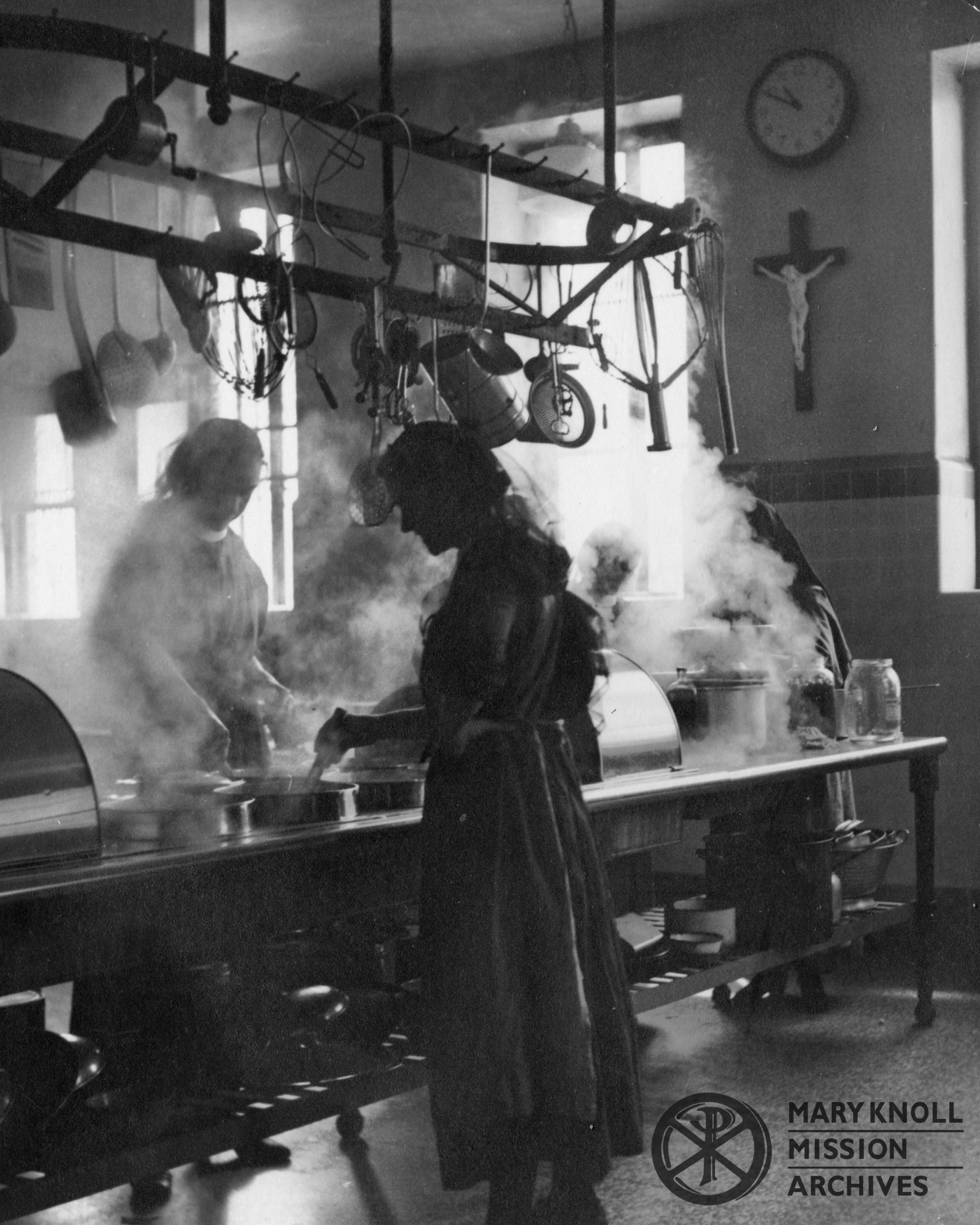Welcome back to another edition of Into The Kitchen with MMJ! Last time, we spent a Day at the Beach and enjoyed a nice picnic! Now the holidays are drawing nearer, and its time for something more comforting. For this edition, I will be making a filling Thanksgiving Meal suitable for a hungry and homesick missioner.
You can check out the full menu below, but this isn’t the “traditional Thanksgiving meal” an American might expect. Instead of the classic Turkey we have Chicken, a meat much more accessible across the world. As well the spread of side dishes is less numerous, being difficult to source the variety of ingredients. This menu is one we might expect a missioner enjoy at their parish in Asia, thinking fondly of home.
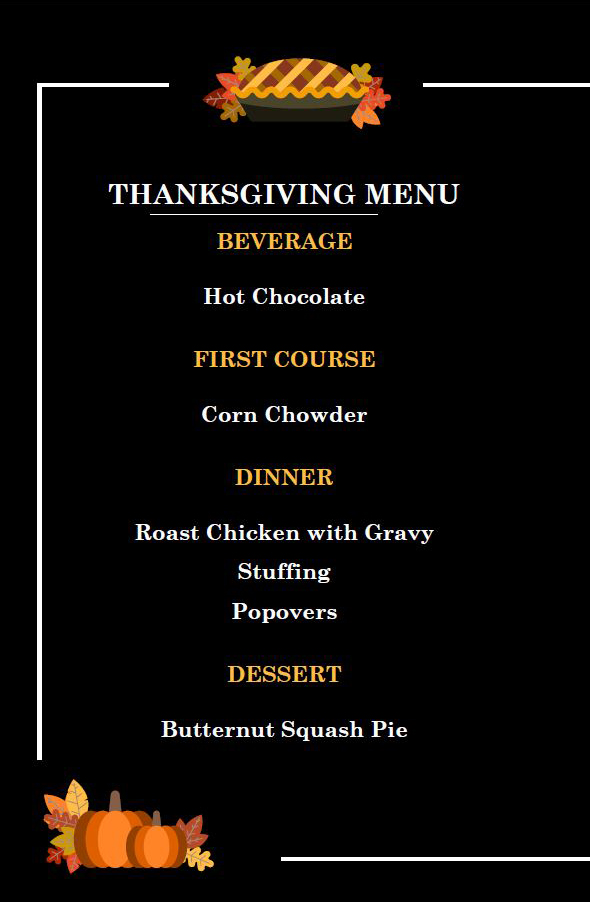
Hot Chocolate
What Did I Think?
To start our Thanksgiving Meal, let us have a hot beverage to warm us up. One of the most comforting beverages and a true treat: Hot Chocolate (or Chocolate I as the recipe states). The method may be different, but in essence we have melted chocolate, sweetened, and put in milk. this creates an indulgent and rich beverage that warms the soul. This recipe can get a bit grainy due to the method (chocolate and water do not like each other), but delicious nonetheless.
Chef’s Corner
Most modern Hot Chocolate recipes has you simply melting the chocolate softly into milk, creating a smooth and creamy texture. MMJ’s recipe has you melt the chocolate and then incorporate it into a sugar syrup, which you then add to the milk. This method can be finicky, thus why you may get a grainy texture. This was done to sweeten the baker’s chocolate, something we do not have to worry about today. This Hot Chocolate is an interesting dive into history, though modern innovations create a better product.
Corn Chowder
What Did I Think?
For our first course, we have a nutritious and delicious Corn Chowder, though one you may be unfamiliar with. This recipe is actually focused on a smooth, creamy soup, while modern chowders have chunks of vegetables, potatoes, bacon, and corn. Even if it is less hearty, this corn chowder still packs a lot of flavor. Even with the salt pork and onion strained out, those flavors are present in the soup. What a great way to start a Thanksgiving meal!
Chef’s Corner
When I first looked at this recipe, I asked myself one question: What is corn pulp? Well, after doing research, I found that is it the milky starch that you can get from a corn cob. Essentially you cut the kernels from the cob and use a spoon to scrap the pulp. It is a bit of a messy process, but will give both flavor and viscosity to the soup. To pack some extra flavor, you can blend the kernels and use them as well. Just be ware this will add a more grainy texture to the soup.
Roast Chicken with
Stuffing and Gravy
What Did I Think?
This is one of the juiciest Whole Roasted Chickens I have eaten. This recipe keeps it simple with just salt and pepper, but with a unique twist. You cover the chicken with a flour-butter paste, creating a crust while it roasts. I was skeptical about the end result, but I was pleasantly surprised. While there wasn’t a crispy skin, the fat still rendered and was palatable. Much like the Fried Chicken I made in the Summer Edition, simple seasoning is sometimes the best. This method is a bit labor intensive, but the results are worth every penny.
As for the Stuffing and Gravy, I used the second Stuffing Recipe and the regular gravy. Both were simple, but good. I find modern cooking uses a lot of spices and vegetables to add varying textures and flavors. While these recipes tend to be better, the simplicity of older recipes have a charm all their own.
Chef’s Corner
This recipe is very different from what I would expect from a Whole Roasted chicken. Now-a-days, most people expect juicy chicken with golden brown and crispy skin paired with a savory seasoning. Here we have more simple seasoning and an interesting crust, made form a butter-flour paste. I think by sacrificing your crispy skin, you ensure the chicken will not overly dry out (particularly the breast). The Flour-butter paste acts as a fat and water insulator, keeping it locked in as the chicken roasts.
If I were to make this again, I would skip dredging the flour on the bottom. The goal of that is to essentially create a gravy, but a regular roux will suffice. Without the flour, it will be easier to use the fat to baste the bird. If you need more liquid in the pan, I would add a butter-water mixture instead of just water, to ensure you have enough fat for basting. Otherwise please give this a try, it’s worth the effort!
Popovers
What Did I Think?
So… I definitely messed up this recipe. My Popovers only browned around the edges, and ended up dense and bouncy. Normally popovers are very light and airy, but mine were the exact opposite. I tried the recipe three times and got the same result, so I’m not sure what I did wrong here. I’ll go over Fannie Farmer‘s recipe in the Chef’s Corner, and see how I could improve and make it properly.
Chef’s Corner
When I think of a Popover, I imagine a golden brown cloud of goodness contained by a crispy crust. While I got a nice crust, my popovers were much more dense. You can see below what the popovers should have looked like. There are some stark differences.
So let’s compare the two recipes. The ingredient list looks very similar, with the only major difference is Fannie puts a bit of butter into the batter, while MMJ’s has it all in the pan. The big difference is the method: MMJ does dry into wet and Fannie does wet into dry. This usually makes a huge difference, and there might be hidden lessons that makes MMJ’s recipe work fine. Regardless, I suggest using MMJ’s recipes, but with Fannie’s method for a different result.
As an interesting historical note: Popover pans have evolved quite a lot over the years. For MMJ and Fannie Farmer’s era, they would be using cast iron gem pans, which were shallow pans that would heat slowly. but hold it incredibly well. This creates a shorter, creamier popover. Modern pans are nonstick steel, which heat quickly and do not need extra fat to create a nonstick surface, and are taller for a fluffy, more showy presentation. Both will work, just slightly different products. If using a modern pan, you can skip the butter in each cup and the preheat, as the pan will heat quickly enough.
Butternut Squash Pie
What Did I Think?
What Thanksgiving Meal would be complete without a fall pie? I chose to make MMJ’s Squash Pie recipe, using butternut as it is one of my favorites this time of year. MMJ has a pretty clear Pie Crust recipe, which was easy enough for a novice baker like me to make. You get a tender crust with a bit of crisp to it. The filling is the show-stopper here, showcasing just how versatile butternut can be. I also appreciate the use of mace, a lighter and sweeter form of nutmeg, which is often forgotten in place of cinnamon nowadays.
Chef’s Corner
When people think pie at Thanksgiving, everyone immediately assumes Pumpkin Pie or maybe Sweet Potato Pie. While these are modern staples, sometimes its best to get back to our roots. What I love about this recipe is its versatility, as you can use any fall or winter squash. You can go for modern pumpkin, our butternut, or honeynut, acorn, or even delicatta. You just need a squash with a tough skin an an interior that gets soft when cooked, but not too fibrous (like spaghetti squash). Pick your favorite and give it a try. To make the puree, I would suggest peeling the squash, then steaming until soft. Then just puree in a blender and/or pass through a sieve for a fine texture.
Also, I have attached a picture of what a fluted crust looks like (exactly what you expect). When I had the dough recipe, I didn’t have enough to do a fluted crust with my 8″ pie tin. I would do 2/3 recipe of the crust instead of a half, just to make sure you you have enough.
Unfortunately MMJ didn’t give us any baking instructions. Based on my limited experience with pies, I baked mine at 350 for about 50 minutes. As with pumpkin pie, you are looking for the filling to move as one when jiggled. With butternut, my filling was a little soft, so you can bake for a bit longer or add a tablespoon of flour to tighten it up. Otherwise I hope you all give this a try, as it leaves many possibilities.

